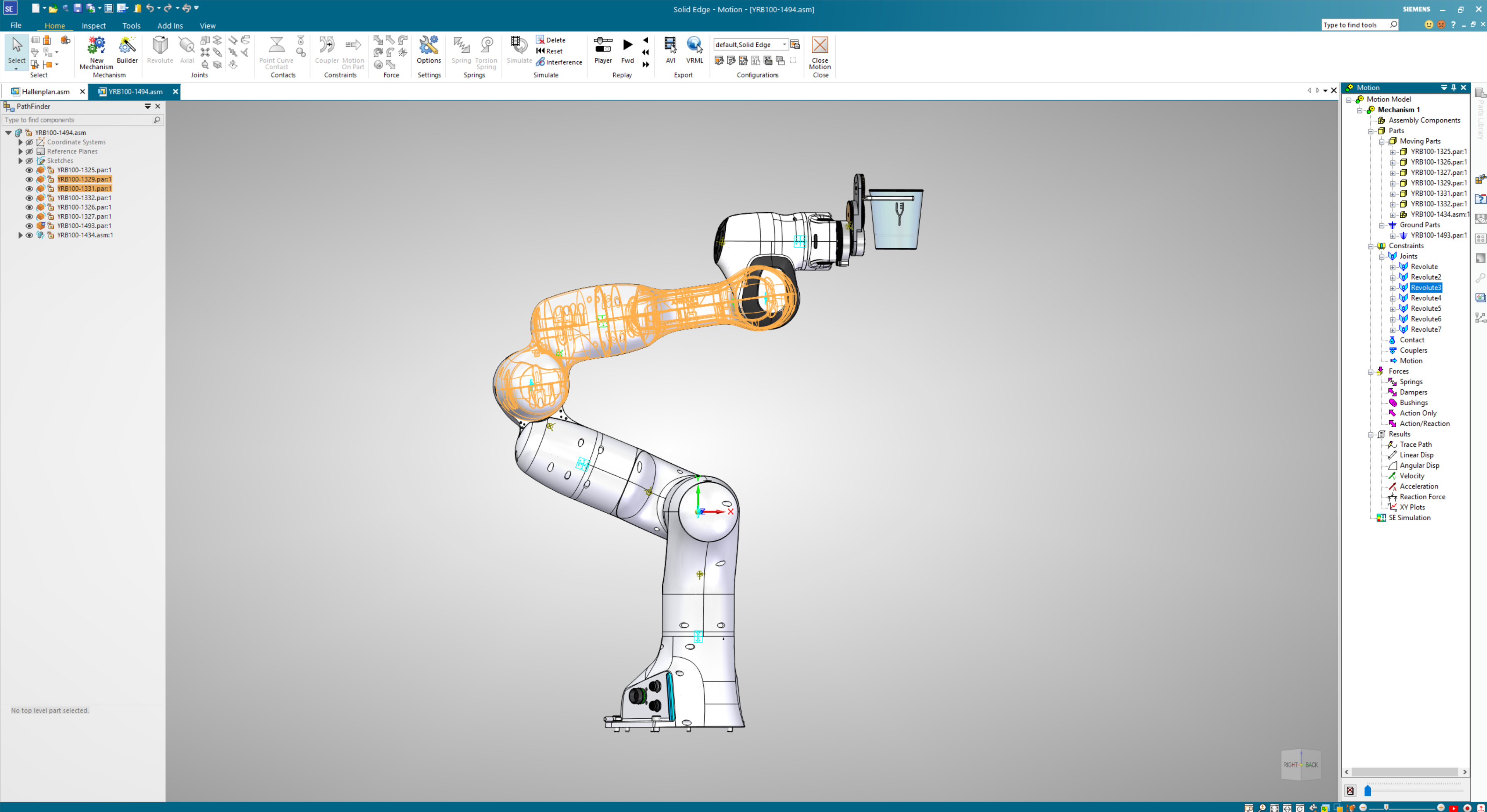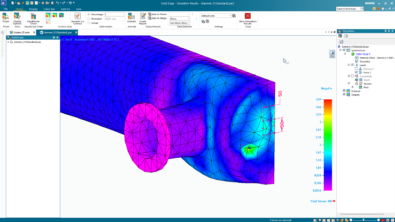New in Solid Edge 2023: Interoperability Enhancements

This year, we’re taking a deep dive into everything that’s new in the Solid Edge 2023 release in a series of blog posts focused on the most noteworthy new features and enhancements. In this post, we’ll cover the latest interoperability enhancements now available in Solid Edge 2023.
New interoperability enhancements in Solid Edge 2023 unlock the power of your design data while future proofing your work. These enhancements enable users to transfer Solid Edge data to and from the Xcelerator portfolio of products, including NX and Process Simulate, easily and accurately. Users can now also directly insert SOLIDWORKS, JT, STEP, and Parasolid files (part or assembly) into Solid Edge assemblies without translation.
Motion kinematics transfer to NX MCD and Process Simulate
Motion kinematics defined in Solid Edge are easily transferred to NX MCD and Process Simulate for use in simulation studies and Virtual Commissioning. Increasing productivity by reducing rework of constraints. Users can now export joints, couplers, links, rigid bodies, geometry reference, gravity, mechanical mass properties, etc. for use in NX MCD and Process Simulate simulation studies. Data can now be exported using PLMXML and JT file formats. NX MCD (Mechatronics Concept Designer) enables 3D modeling and simulation of concepts with multi-body physics and automation-related behavior typically found in mechatronics products.

CAD Direct support for SolidWorks, JT, STEP, and Parasolid formats
Insert SolidWorks, JT, STEP, Parasolid file (part or assembly) to Solid Edge assembly directly without the need for translation. CAD Direct makes working and collaborating with partners, suppliers and even other departments with your company easier than before by supporting multiple file types, without the need for everyone to use the same modeling system. The links are maintained between parent file and Solid Edge geometry. Solid bodies and surfaces in Solid Edge can be inserted in the form of Internal Components. Inserted geometry can be used for downstream changes, such as relationships or assembly features. Changes made in parent file can be reflected in CAD Direct or users can break the link if needed.
Translation from NX easier than before
Material and physical properties assigned in Solid Edge are seamlessly translated to NX. This allows users to transfer consistent data for CAD, CAE and CAM applications. Enhanced PMI transfer capabilities include section and model views, and the ability to associate sketch and section view dimensions to a design body. This enhances interoperability with NX CAM and NX CMM. Scalable data sharing between Solid Edge and NX ensures data integrity.
To learn more about what’s new in this release, visit siemens.com/solid-edge-2023.
Join the conversation
There are a lot of ways to find out what others are saying about the latest release and to connect with industry peers and CAD experts online. Log into the Solid Edge Community to connect and interact with other Solid Edge users around the world and get answers to questions in real-time from Siemens experts. You can also follow the #SolidEdge2023 hashtag on Facebook, YouTube, Twitter, and LinkedIn to see what others are saying on social media.


